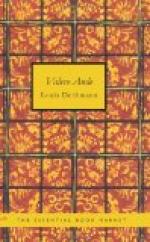=His methods will prevent the use of the surgeon’s knife, which only removes the symptom, leaving the cause untouched and inflicting useless and irreparable harm. The specialist, with his poisonous specific remedies for forms of disease, which after all are only degrees of chemical exhaustion, will also disappear, together with all similar treatment which enervates the body making it an easy prey to new attacks of the same chemical anomalies which must and will most certainly return so long as they are not rectified according to the principles of biology.=
THE TWELVE TISSUES.
Bearing the above principle of unity in mind, we may now proceed one step further, and study the most important details upon which the method of healing, as applied by the hygienic-dietetic physician, is based.
As previously mentioned, the cells of the human body are organized into twelve distinct tissues, some of which are the component parts of the various organs as discernible by form and function.
These twelve tissues are the following:
1. The plasmo tissue (blood plasma). 2. The lymphoid tissue. 3. The nerve tissue. 4. The bone tissue. 5. The muscular tissue. 6. The mucous membrane tissue. 7. The tooth and eye tissue. 8. The hair tissue. 9. The skin tissue. 10. The gelatigenous tissue. 11. The cartilage tissue. 12. The body tissue in general.
1. The plasmo tissue: This tissue is a liquid, the blood plasma, which is one of the important component parts of the life-giving substance, blood. It is the blood serum—blood-water and fibrogen—which harbours the white and the red corpuscles. The red corpuscles are the carriers of oxygen to the various tissues, which the body draws from the atmosphere, and of the other nutriments. They exchange it for the carbonic acid which is forming in the body, and while the blood in flowing through the system of arteries, brings the oxygen, it carries away, through the veins, the poisonous carbonic acid which is exhaled into the atmosphere.
The red corpuscles, after having performed their duties, enter the liver and are used to build the gall.
The proper quality of the plasma alone regulates the speed of blood circulation and ensures its entrance into the finest capillaries—the ultimate branches of the blood-vessels—hence, its capacity to carry supplies of nutriment to the tissues. The disturbance of this proper quality is among the main factors of constitutional disease.
2. The lymphoid tissue: The lymph is another of the life-giving liquids of the body, which through a vascular system of its own, draws certain nutritive substances from the food and carries them to certain organs which it feeds, especially the nerves.
After this slow task is completed, the rest of the lymph enters the blood and is carried by it to other parts of the body where only smaller quantities of lymph are needed for nourishing purposes.




